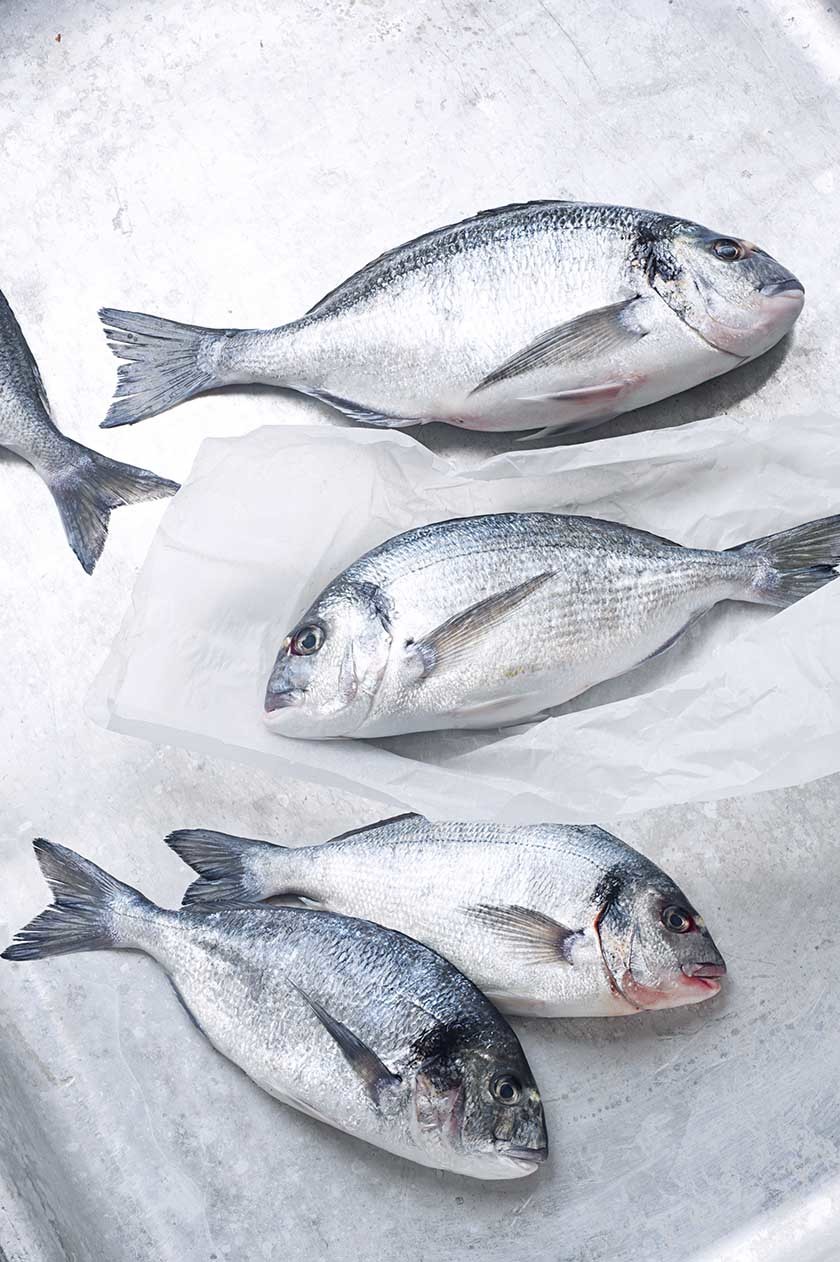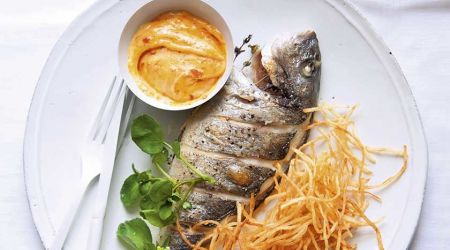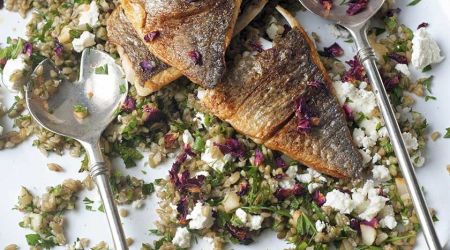Bream
Seen as sacred to Aphrodite in Ancient Greece and a key dish at Japanese weddings, bream has been earning its place at the table for millennia, says Clarissa Hyman
Gilt-head bream sounds as if it has been decorated by the Marine Court of King Neptune itselt. 'Arise Sir Gilt-head,’ one can fancifully imagine the watery cry gurgling through fathoms deep, as the dashing young poisson regally waves its sharp dorsal fins to acknowledge its status as the finest of all sea breams.
Sparus aurata, to give its formal name, is also called the royal bream, which reflects its French appellation daurade royale as well as its exquisite, aristocratic eating qualities.
The gilt refers to a gold spot on each cheek and a golden, crescent-shaped band that runs across the head between the eyes, rather like a unibrow. In classical Greece, the lightly scaled, silvery fish was regarded as sacred to Aphrodite, the goddess of love.
Much sought after for their high market value, bream are farmed mainly in the Mediterranean. They can thrive in waters less salty than the open sea, which widens the locations where aquaculture farms can be established. Some believe that the wild fish have a flavour and texture that is superior to farmed, but much may depend on the conditions in individual farmed environments. To help conserve the species, there is a minimum landing size in place for many species around the world, although this varies from region to region.
Bream are a broad family with at least 20 species and many related varieties, often identified by colour coding, like women in The Handmaid’s Tale – or, curiously, by their teeth, although I realise this is not always possible at your local supermarket fish counter.
The red sea bream or dorade (not to be confused with daurade) is relatively rare to these shores today but was once a common visitor to Cornish waters, swimming up with the Gulf Stream. They are said to be strong fighting fish that resist capture till the last, and have powerful jaws that can crunch up molluscs and crustaceans, thus adding to their eating quality. Distinguished by a pronounced black spot just behind the head, they have an attractive soft, silvery-pink skin and large eyes, which account for their Italian name occhialone. In the Basque regions of France and Spain, where they are called besugo, they are the classic dish to eat on Christmas Eve.
Ray’s bream also has the Latin name brama brama, which makes it sound like a girl band. They are named after John Ray, a 17th-century British naturalist, and were described by the late expert food writer Alan Davidson as ‘a noble and solitary fish’. They are particularly appreciated in Portugal, where they are called chaputa, for their tasty, firm flesh. There has been a move to call them Atlantic pomfret, which perhaps more accurately reflects their appearance and texture.
There is also a whole retinue of other family members, such as the little black bream that is in fact silver-grey in colour with noticeable black stripes running the length of the body. There is also the delicately tinted pink pandora or pagel, a popular game fish caught in the Atlantic off the coasts of Mauritania and Senegal, although Davidson damned it with faint praise when he noted it was ‘not worthy of the highest culinary attention’.
The yellowfin sea bream is found in the Indo-West Pacific and is used in Chinese medicine; bogue is a Maltese favourite identified by its large, cow-like eyes. Pargo is widely found throughout the Mediterranean and East Atlantic: its fine-quality flesh is poached and served with boiled potatoes laced with olive oil in Portugal. However, buy from a trusted source: it is quite delicate and should be very fresh or it will acquire a peculiar taste, which the Portuguese call fénico.
Sar doré or white bream has thin yellow bands like go-faster stripes running along its body, as well as two dark vertical bands. It is closely related to the larger sar commun (for which there is no English word) and the annular sea bream. Salema is also a fish of the East Atlantic and Mediterranean, but its quality varies according to its food and the mode it is in (migratory or sedentary). The herbivorous habits of the Mediterranean salema (saupe in French) have earned them the name chévre (goat) in Algeria.
Dentex is a large sea bream found throughout the Mediterranean and, to a lesser extent, the East Atlantic. It shares the honours with the gilt-head for quality of texture and taste. Curiously, its colour varies according to age, often from grey to a somewhat rosy hue and to a bluish grey; the number and placement of dark spots on the body (a good way of identifying the fish) varies. It is a solitary and predatory fish, feeding off other species. In the Mediterranean it is popular roasted whole with tomatoes, olives, olive oil, marjoram and thyme, and in North Africa with cumin, coriander and fennel. Another delicious method is to grill it and then serve it slathered with anchovy butter.
Without getting too provocative, one characteristic runs throughout the diverse clan: gender-bending sexuality. They start off male, then transform themselves into females at a certain age (and sometimes from female to male). But enough of that – on to the important part, the cooking.
Sea bream generally have oval, narrow
bodies and are well suited to being grilled
or baked whole on the bone. Larger ones
may be poached or baked, and fillets
simply pan-fried or baked in white wine
with flavourings. They lend themselves
to strong, southern flavours, such as
thyme and fennel, tomato and lemon,
saffron and coriander. One wonderful
method with gilt-head bream is to bake
it whole in a thick ‘jacket’ of sea salt:
when the jacket is broken, the skin peels
off with it, leaving the succulent flesh
exposed. It’s a spectacular way of serving
this absolute gem of a fish.

Recipes
Get Premium access to all the latest content online
Subscribe and view full print editions online... Subscribe




